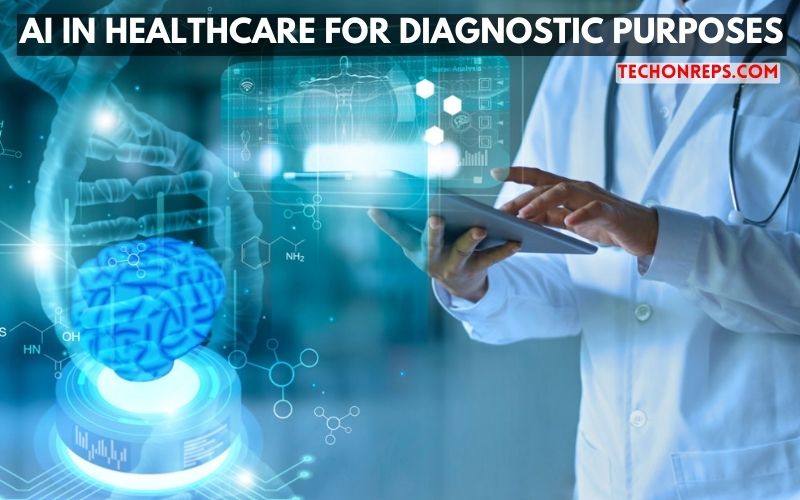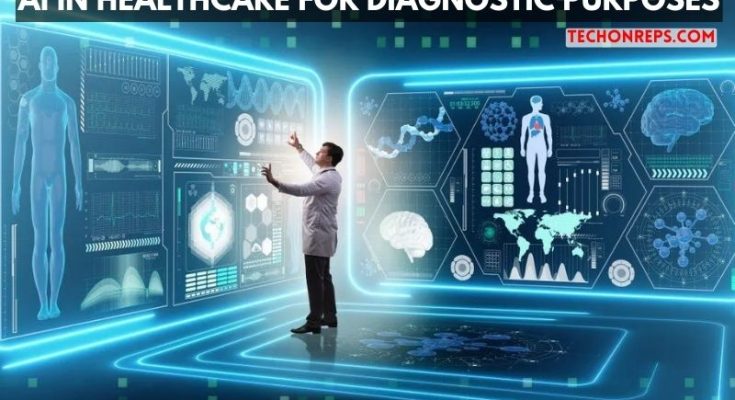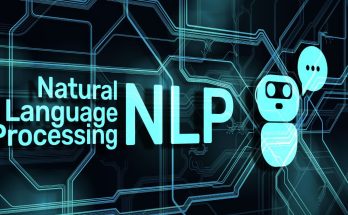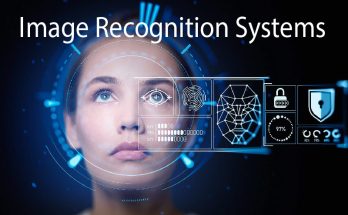Revolutionizing Healthcare: The Role of AI in Healthcare for Diagnostic Purposes
In recent years, artificial intelligence (AI) has made significant strides in various industries, with healthcare being one of the most promising domains. Among its many applications, AI’s role in diagnostic medicine stands out as particularly transformative. By leveraging advanced algorithms and machine learning techniques, AI has the potential to revolutionize the way diseases are detected and diagnosed, ultimately improving patient outcomes and reducing healthcare costs. In this comprehensive guide, we’ll delve into the various ways AI In Healthcare for Diagnostic Purposes, exploring its benefits, challenges, and future implications.

Enhanced Medical Imaging
Medical imaging plays a crucial role in the early detection and diagnosis of numerous diseases, ranging from cancer to neurological disorders. However, interpreting complex imaging scans such as MRI, CT, and X-ray images requires specialized training and expertise. This is where AI comes in, offering the ability to analyze vast amounts of imaging data with unprecedented speed and accuracy.
One of the most promising applications of AI in medical imaging is in the detection of abnormalities and anomalies. By training algorithms on large datasets of labeled images, AI systems can learn to identify subtle patterns and deviations that may be indicative of disease. For example, deep learning algorithms have been developed to assist radiologists in detecting early signs of breast cancer in mammograms, achieving performance comparable to that of experienced human specialists.
Furthermore, AI-powered imaging technologies can enhance the efficiency of radiology workflows by automating routine tasks and prioritizing critical cases. By flagging potentially urgent findings and reducing the time spent on manual image analysis, AI systems enable radiologists to focus their expertise on more complex cases, ultimately improving diagnostic accuracy and patient care.
Predictive Analytics and Risk Stratification
In addition to image analysis, AI is also being utilized for predictive analytics and risk stratification in healthcare. By analyzing diverse datasets encompassing patient demographics, medical history, genetic information, and clinical outcomes, AI algorithms can identify patterns and correlations that may not be apparent to human clinicians.
One notable application of AI in predictive analytics is in the early detection of deteriorating patient conditions and the prevention of adverse events. For instance, AI-powered algorithms can analyze real-time physiological data from wearable devices and electronic health records to predict the likelihood of complications such as sepsis or cardiac arrest, allowing healthcare providers to intervene proactively and mitigate risks.
Moreover, AI-driven risk stratification models enable healthcare organizations to allocate resources more effectively by identifying high-risk patients who may benefit from targeted interventions or preventive care initiatives. By stratifying patient populations based on their risk profiles, healthcare providers can prioritize interventions such as disease screenings, lifestyle interventions, and medication adherence programs, thereby improving health outcomes and reducing healthcare costs in the long term.
Virtual Assistants and Clinical Decision Support Systems
Another area where AI is making significant strides in diagnostic medicine is in the development of virtual assistants and clinical decision support systems (CDSS). These AI-powered tools are designed to assist healthcare professionals in making informed clinical decisions by providing relevant information, evidence-based recommendations, and predictive insights in real time.
Virtual assistants, such as chatbots and voice-activated interfaces, offer a user-friendly way for clinicians to access medical knowledge databases, drug databases, and clinical guidelines at the point of care. By leveraging natural language processing (NLP) and machine learning algorithms, these virtual assistants can understand and respond to user queries, helping clinicians navigate complex medical information and stay up-to-date with the latest research and best practices.
Similarly, CDSS leverage AI algorithms to analyze patient data, medical literature, and clinical guidelines to provide personalized recommendations and treatment plans. These systems can alert clinicians to potential medication errors, drug interactions, and diagnostic inconsistencies, thereby reducing the risk of diagnostic errors and adverse events. Moreover, CDSS can help standardize care protocols, promote evidence-based practice, and improve clinical outcomes across healthcare settings.
Challenges and Considerations
While the potential benefits of AI in diagnostic medicine are undeniable, several challenges and considerations must be addressed to ensure its safe and effective implementation. One major concern is the need for robust validation and regulation of AI algorithms to ensure their reliability, accuracy, and generalizability across diverse patient populations and healthcare settings. Additionally, issues related to data privacy, security, and bias must be carefully managed to safeguard patient confidentiality and prevent unintended consequences.
Furthermore, the integration of AI into clinical workflows requires careful planning and stakeholder engagement to overcome barriers such as resistance to change, workflow disruptions, and the need for additional training and support. Healthcare organizations must invest in infrastructure, interoperability standards, and data governance frameworks to enable seamless integration and interoperability of AI systems with existing health IT systems and workflows.
Future Directions and Implications
Looking ahead, the future of AI in diagnostic medicine holds immense promise for transforming healthcare delivery and improving patient outcomes. As AI technologies continue to evolve and mature, we can expect to see increasingly sophisticated applications in areas such as personalized medicine, population health management, and precision diagnostics.
Moreover, AI has the potential to democratize access to healthcare by extending diagnostic capabilities to underserved populations, remote areas, and resource-constrained settings where access to expert medical professionals may be limited. By leveraging telemedicine platforms, mobile health apps, and AI-powered diagnostic tools, patients can receive timely and accurate diagnoses, leading to earlier interventions and better health outcomes.
Conclusion:
AI is poised to revolutionize diagnostic medicine by enhancing the accuracy, efficiency, and accessibility of healthcare services. By harnessing the power of AI-driven technologies, healthcare providers can improve diagnostic accuracy, streamline clinical workflows, and deliver more personalized and cost-effective care to patients around the globe. However, realizing the full potential of AI in healthcare requires collaborative efforts from policymakers, healthcare organizations, technology vendors, and other stakeholders to address challenges and ensure responsible and equitable deployment of AI solutions in clinical practice.



